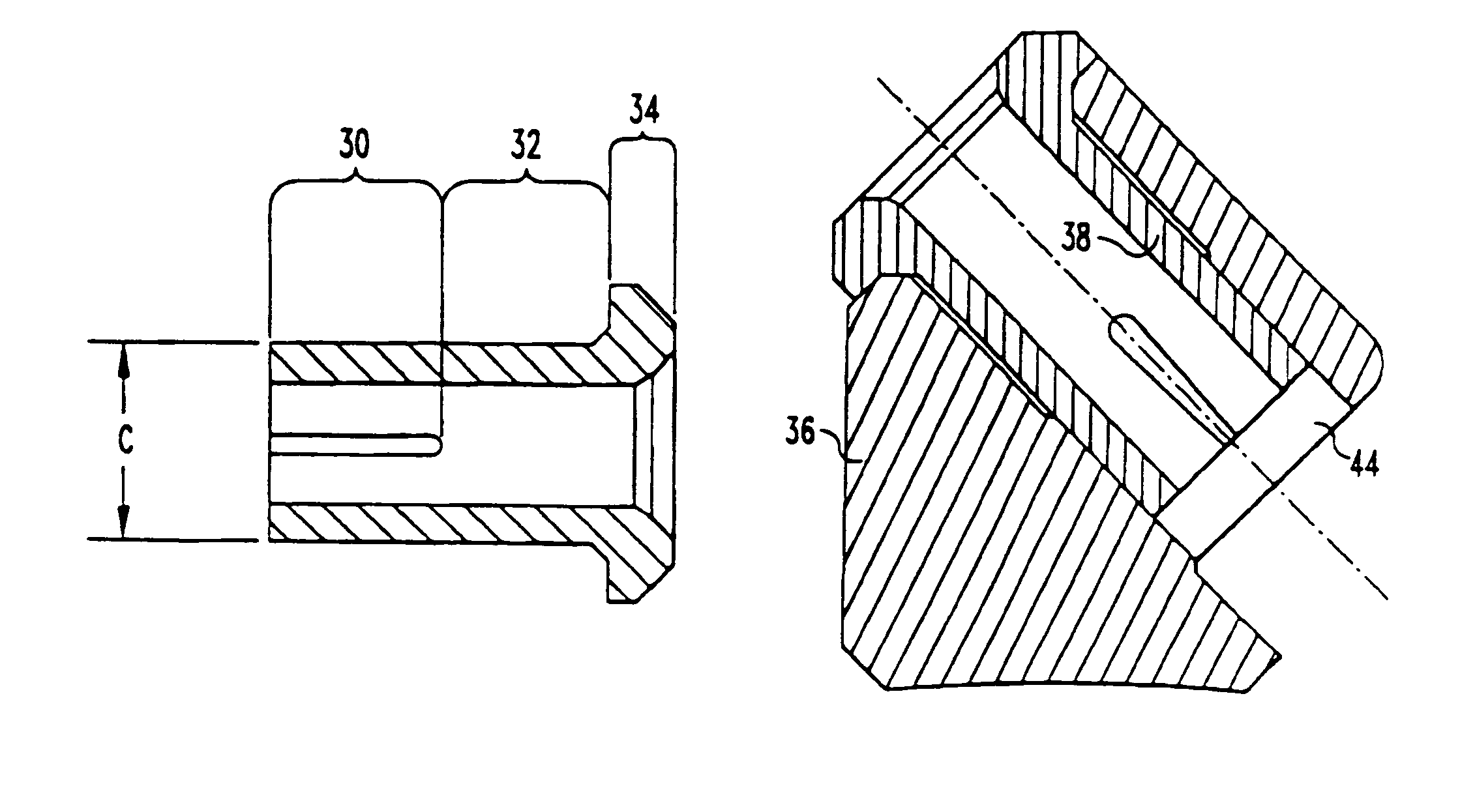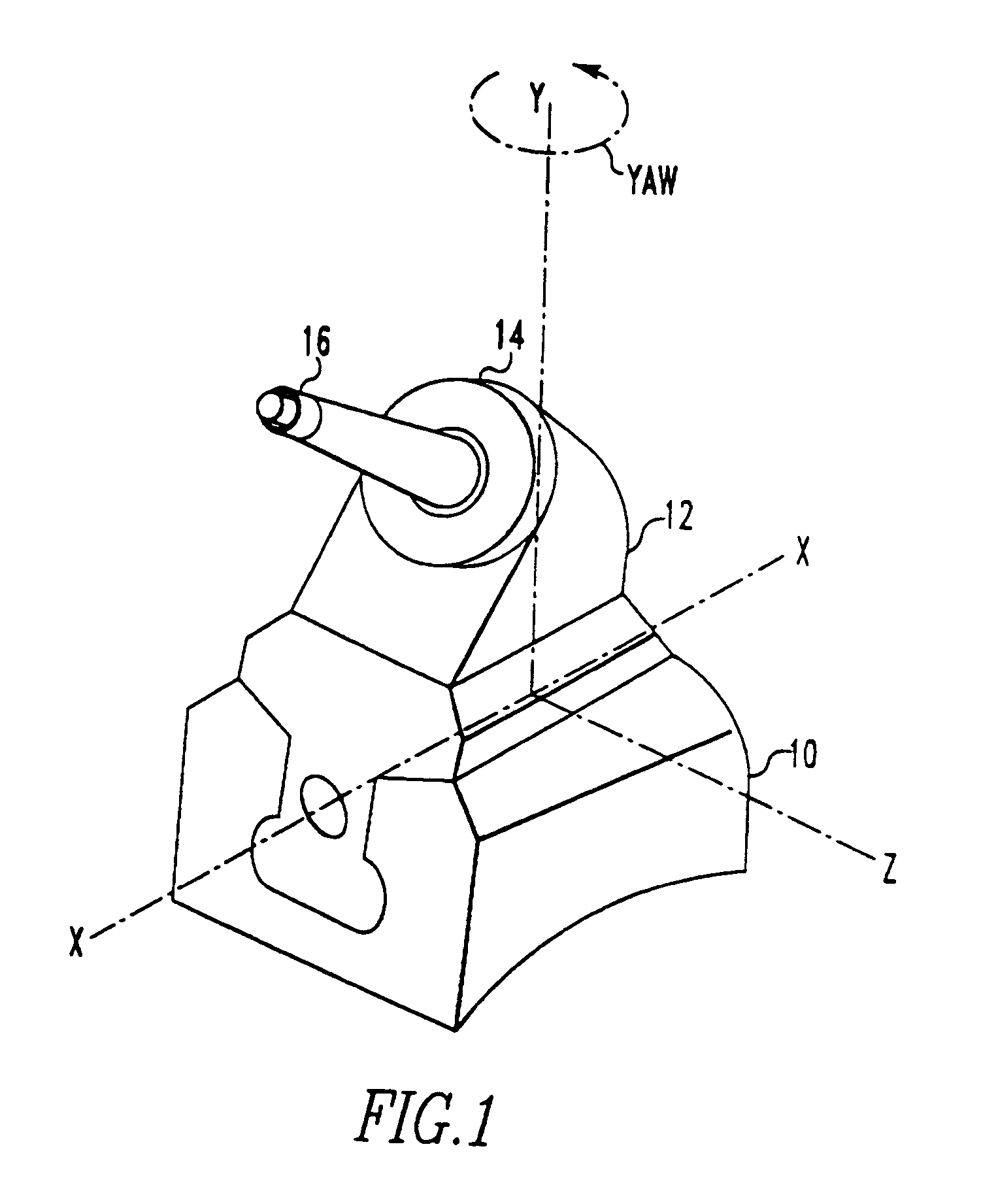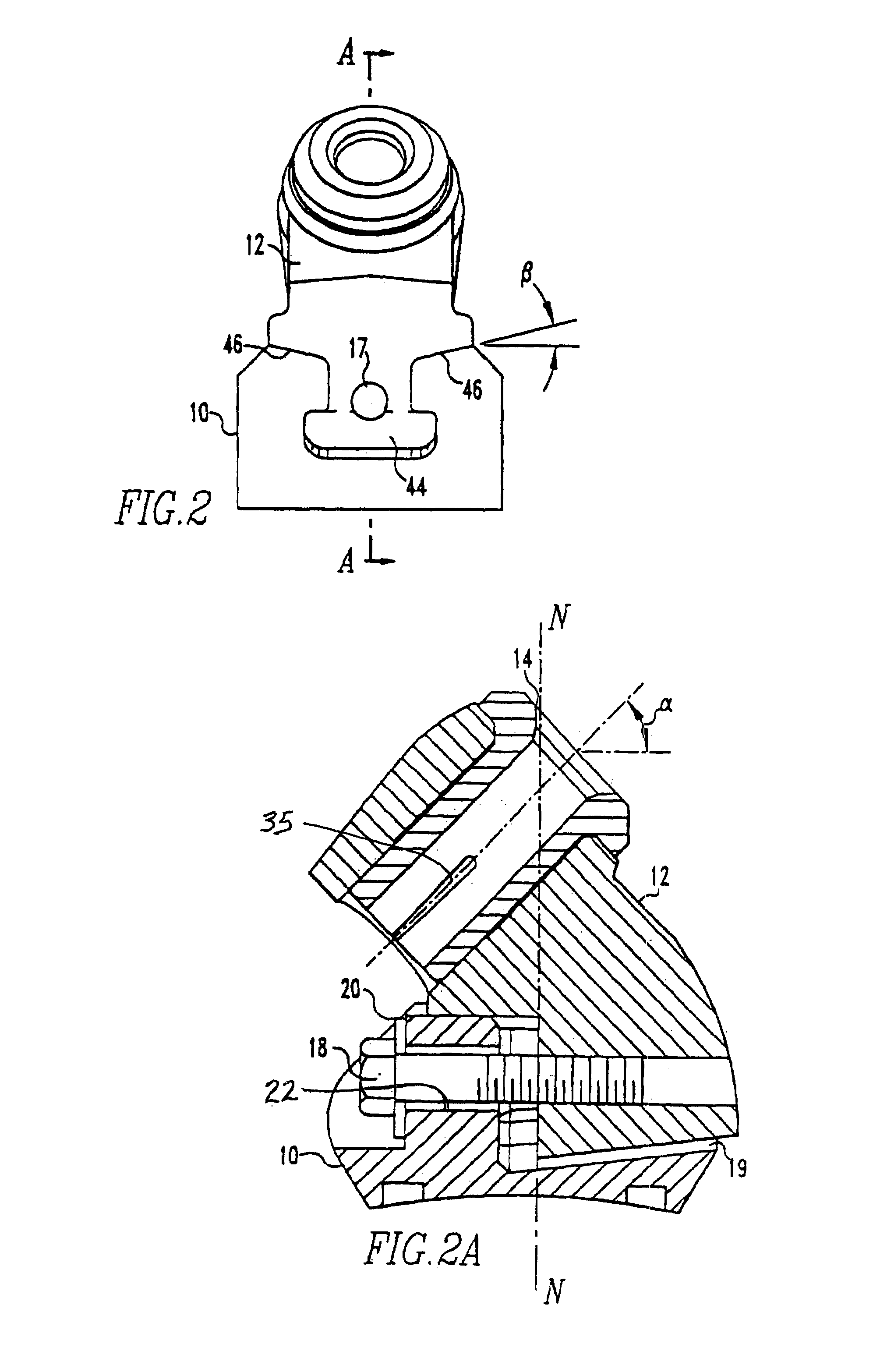Manually replaceable protective wear sleeve
a protective wear and replaceable technology, applied in the direction of drilling pipes, drilling casings, slitting machines, etc., can solve the problems of reducing the service life accelerating the wear and tear of the bit holder, and reducing the undesirable yaw and wear caused by the bit holder. , the effect of quick and less expensive manufacturing
- Summary
- Abstract
- Description
- Claims
- Application Information
AI Technical Summary
Benefits of technology
Problems solved by technology
Method used
Image
Examples
second embodiment
[0035]FIGS. 5 and 6 illustrate the present invention. The second embodiment shows a standard well-known bit holder 36 for mounting the cutting tool. A wear sleeve 38 similar to the wear sleeve disclosed in the first embodiment and shown in FIG. 4 is inserted into a stepped bore aperture 44 similar in construction to the step bore illustrated in FIG. 3. The split ring design frictionally fixes the wear sleeve in position inside the bit holder aperture.
[0036]The shoulder of the wear sleeve in the second embodiment is also greater in thickness than prior art shoulders. Similar to the first embodiment the thick collar design extends the useful life of the wear sleeve.
[0037]Yaw as shown in FIG. 1 is rotation about the central vertical axis of the support block, see the Y-axis. Rotation about the Y-axis occurs in the horizontal X-Z plane. Forces are applied to the cutting tool tip 16 during rotation of the pick into the earth's strata. The resultant forces applied to the cutting pick duri...
PUM
 Login to View More
Login to View More Abstract
Description
Claims
Application Information
 Login to View More
Login to View More - R&D
- Intellectual Property
- Life Sciences
- Materials
- Tech Scout
- Unparalleled Data Quality
- Higher Quality Content
- 60% Fewer Hallucinations
Browse by: Latest US Patents, China's latest patents, Technical Efficacy Thesaurus, Application Domain, Technology Topic, Popular Technical Reports.
© 2025 PatSnap. All rights reserved.Legal|Privacy policy|Modern Slavery Act Transparency Statement|Sitemap|About US| Contact US: help@patsnap.com



